- Recognizing Brown Spot (Cladosporiosis) on Tomato Plants
- 1. Leaf Symptoms
- 2. Stem Symptoms
- 3. Fruit Symptoms
- 4. Spore Production
- 5. Environmental Factors
- Preventing Brown Spot (Cladosporiosis) in Tomato Plants
- Introduction
- 1. Crop Rotation
- 2. Proper Spacing
- 3. Sanitation
- 4. Water Management
- 5. Fungicide Application
- Conclusion
- Choosing Resistant Tomato Varieties to Prevent Brown Spot (Cladosporiosis)
- 1. Look for Resistant Varieties
- 2. Check Seed Packets or Plant Labels
- 3. Consult a Gardening Expert
- 4. Consider Heirloom Varieties
- 5. Rotate Crop Varieties
- Practicing Good Crop Rotation to Prevent Brown Spot (Cladosporiosis)
- Steps for Practicing Crop Rotation:
- Benefits of Crop Rotation:
- Using Proper Plant Spacing and Pruning Techniques to Prevent Brown Spot (Cladosporiosis)
- 1. Plant Spacing
- 2. Pruning Techniques
- 3. Mulching and Weeding
- 4. Crop Rotation
- Applying Fungicides to Control Brown Spot (Cladosporiosis) in Tomato Plants
- Implementing Organic Methods to Control Brown Spot (Cladosporiosis) in Tomato Plants
- 1. Crop Rotation
- 2. Proper Spacing and Pruning
- 3. Mulching
- 4. Disease-Resistant Varieties
- 5. Neem Oil
- 6. Baking Soda Spray
- 7. Copper Fungicides
- Managing Environmental Conditions to Prevent Brown Spot (Cladosporiosis) in Tomato Plants
- 1. Proper Air Circulation
- 2. Plant Spacing
- 3. Mulching
- 4. Soil Drainage
- 5. Watering Techniques
- 6. Timely Watering
- 7. Remove Infected Leaves
- 8. Proper Fertilization
- 9. Crop Rotation
- 10. Pruning
- “Question-Answer”
- What is brown spot (cladosporiosis) and how does it affect tomato crops?
- What are the common symptoms of brown spot on tomato plants?
- How can I prevent brown spot in my tomato crop?
- What are some effective methods for controlling brown spot in tomato plants?
- Can organic methods be used to control brown spot in tomato crops?
- “Video” After this treatment, tomatoes immediately bear fruit and never get sick with late blight
Tomatoes are one of the most popular crops to grow in home gardens and for good reason. They are versatile, delicious, and packed with essential nutrients. However, they are also susceptible to a variety of diseases, including brown spot or cladosporiosis.
Brown spot is a common fungal disease that affects tomato plants, causing dark, sunken lesions on the fruit and foliage. If left untreated, it can severely damage or even kill the entire crop. Fortunately, there are several effective methods you can use to save your tomato crop from brown spot.
1. Proper spacing and pruning: Brown spot thrives in humid environments with poor air circulation. To prevent its spread, make sure to plant your tomato plants with enough space between them to allow for good airflow. Additionally, regularly prune the lower leaves of the plants to improve ventilation and reduce the risk of infection.
2. Water management: Overhead watering can contribute to the spread of brown spot, as the fungal spores are splashed onto the leaves and fruit. Instead, water your tomato plants at the base, using a drip irrigation system or watering can. Avoid getting the leaves wet and water in the morning to allow the foliage to dry quickly.
3. Mulching: Applying a thick layer of organic mulch around the base of your tomato plants can help prevent the splashing of fungal spores onto the leaves. Mulch also helps regulate soil moisture and temperature, creating a more favorable growing environment and reducing the risk of brown spot.
4. Fungicide treatments: If brown spot has already appeared on your tomato plants, it is crucial to take immediate action. There are several fungicides available that can effectively control the disease. Be sure to choose a product specifically labeled for use on tomatoes and follow the instructions carefully.
5. Crop rotation: To prevent the recurrence of brown spot in future tomato crops, it is essential to practice crop rotation. Avoid planting tomatoes in the same spot for at least three years, as the fungal spores can survive in the soil and re-infect the plants. Instead, choose a different area of your garden or use containers to grow your tomatoes.
By implementing these effective methods, you can save your tomato crop from brown spot and ensure a bountiful harvest of healthy, disease-free tomatoes.
Recognizing Brown Spot (Cladosporiosis) on Tomato Plants
One of the most common diseases that affects tomato plants is brown spot, also known as cladosporiosis. This fungal disease can cause significant damage to a tomato crop if left untreated. Recognizing the symptoms of brown spot is crucial in order to take appropriate action and prevent further spread.
1. Leaf Symptoms
One of the first signs of brown spot is the appearance of small, brown or black spots on the leaves of tomato plants. These spots can vary in size and may eventually develop a yellow halo. As the disease progresses, the spots can coalesce, turning the entire leaf brown or black. In severe cases, the leaves may wither and die.
2. Stem Symptoms
Brown spot can also affect the stems of tomato plants. Infected stems may develop dark, sunken lesions. These lesions can girdle the stem, causing wilting and eventually death of the entire plant.
3. Fruit Symptoms
In addition to affecting the leaves and stems, brown spot can also appear on tomato fruits. Infected fruits may develop circular, dark brown or black lesions, which can become larger as the disease progresses. These lesions can also have a concentric ring pattern, giving them a distinctive appearance.
4. Spore Production
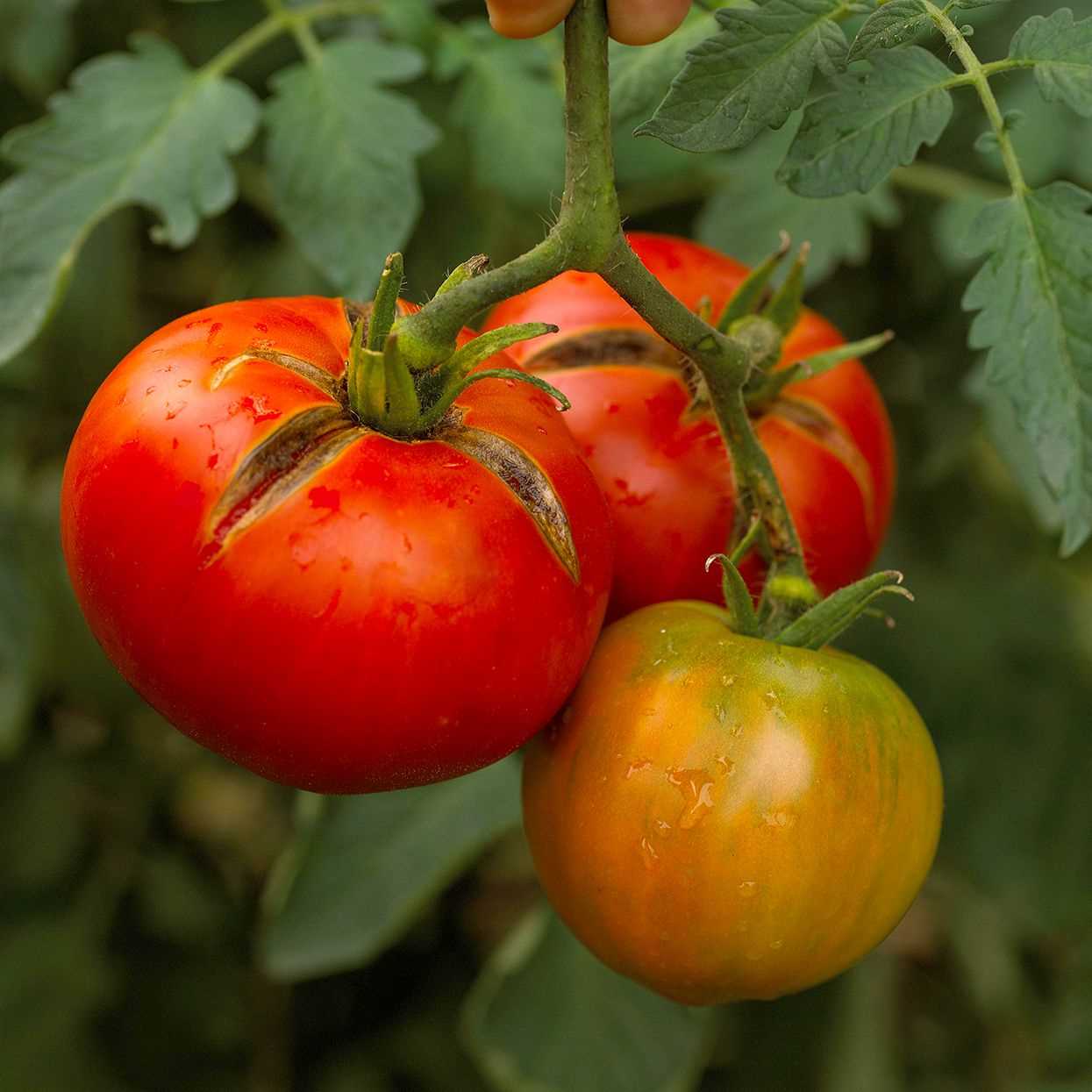
If you observe the affected leaves or fruits closely, you may notice a dark, velvety appearance. This is due to the presence of spores produced by the Cladosporium fungus. These spores can easily spread to nearby plants, especially during periods of high humidity or rain.
5. Environmental Factors
Brown spot thrives in warm and humid conditions. It is more likely to develop and spread during periods of high humidity, rain, or when plants are overcrowded. Proper spacing between tomato plants and ensuring proper air circulation can help reduce the risk of infection.
By familiarizing yourself with the symptoms of brown spot and taking appropriate measures to prevent its spread, you can protect your tomato crop and ensure a successful harvest.
Preventing Brown Spot (Cladosporiosis) in Tomato Plants
Introduction
Brown Spot, also known as Cladosporiosis, is a common fungal disease that affects tomato plants. It can cause significant damage to the tomato crop, resulting in reduced yield and poor fruit quality. However, with proper preventive measures, it is possible to protect tomato plants from this disease and maintain a healthy crop.
1. Crop Rotation
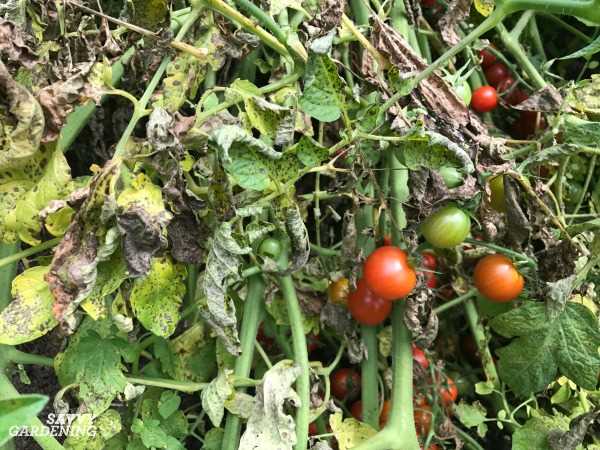
One effective method to prevent Brown Spot is practicing crop rotation. Avoid planting tomatoes in the same location in consecutive years, as the fungus can overwinter in the soil and re-infect the plants. Rotate tomatoes with other non-susceptible crops such as legumes or grains to break the disease cycle.
2. Proper Spacing
Proper spacing between tomato plants is essential to prevent the spread of disease. Overcrowded plants create a favorable environment for fungal growth and reduce air circulation, increasing the chances of infection. Maintain a spacing of at least 2 feet between plants to allow better airflow and minimize the risk of Brown Spot.
3. Sanitation
Good sanitation practices can help prevent the spread of Brown Spot. Remove and destroy any infected plant debris, including affected leaves, stems, and fruit. Avoid composting infected plant material, as the fungus can survive and spread. Regularly clean and disinfect gardening tools to prevent the transfer of pathogens between plants.
4. Water Management
Proper water management is crucial in preventing the development of Brown Spot. Avoid overhead watering, as it can lead to prolonged leaf wetness and create favorable conditions for fungal growth. Instead, opt for drip irrigation or soaker hoses to deliver water directly to the plant’s roots, minimizing leaf moisture.
5. Fungicide Application
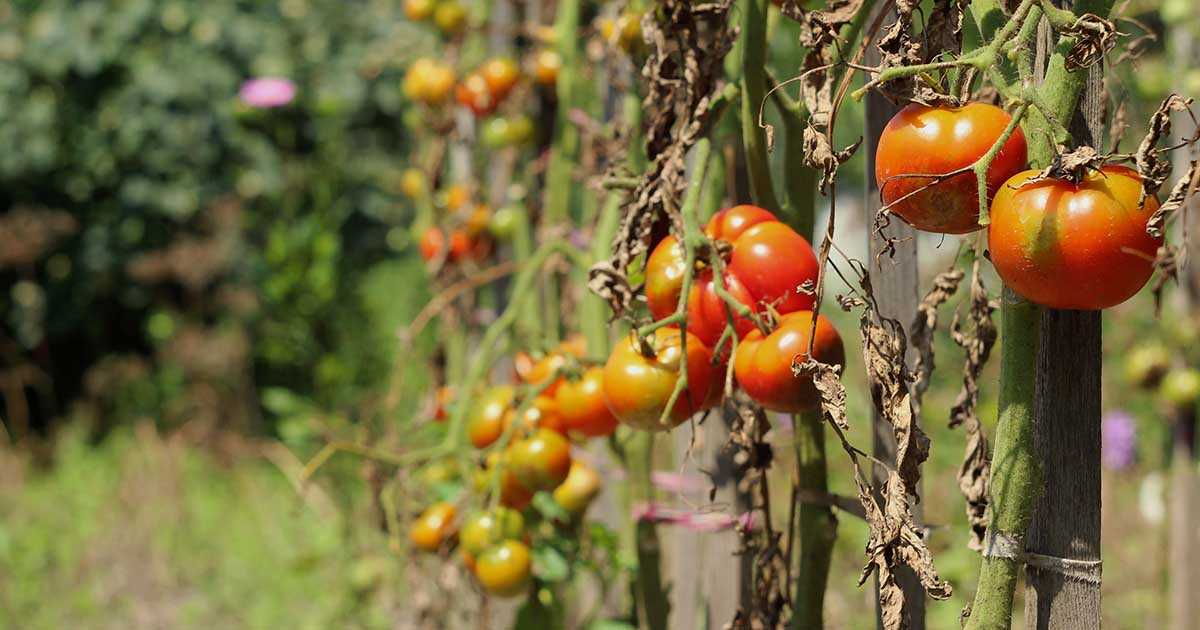
In severe cases or when preventive measures are not sufficient, fungicide application may be necessary. Choose a fungicide labeled for controlling Cladosporiosis and follow the instructions carefully. Apply the fungicide as a preventive measure before the disease becomes established, or as soon as symptoms are noticed.
Conclusion
By implementing these preventive methods, you can significantly reduce the risk of Brown Spot in your tomato plants. Remember to monitor your plants regularly for any signs of disease and take prompt action to prevent its spread. Healthy plants will not only give you a bountiful harvest but also provide a beautiful addition to your garden.
Choosing Resistant Tomato Varieties to Prevent Brown Spot (Cladosporiosis)
One of the most effective ways to prevent brown spot (Cladosporiosis) in tomatoes is to choose tomato varieties that are resistant to the disease. Resistant tomato varieties have been bred to naturally withstand or tolerate the infection by Cladosporium fulvum, the fungus that causes brown spot. Here are some tips for choosing resistant tomato varieties:
1. Look for Resistant Varieties
When selecting tomato varieties, look for those that specifically mention resistance to Cladosporium fulvum or brown spot. These varieties are bred to have natural resistance to the disease, which makes them less susceptible to infection.
2. Check Seed Packets or Plant Labels
If you’re purchasing tomato seeds or plants from a nursery or garden center, check the seed packets or plant labels for information about disease resistance. Look for keywords like “resistant,” “tolerant,” or “VFN” (which stands for Verticillium wilt, Fusarium wilt, and nematodes).
3. Consult a Gardening Expert
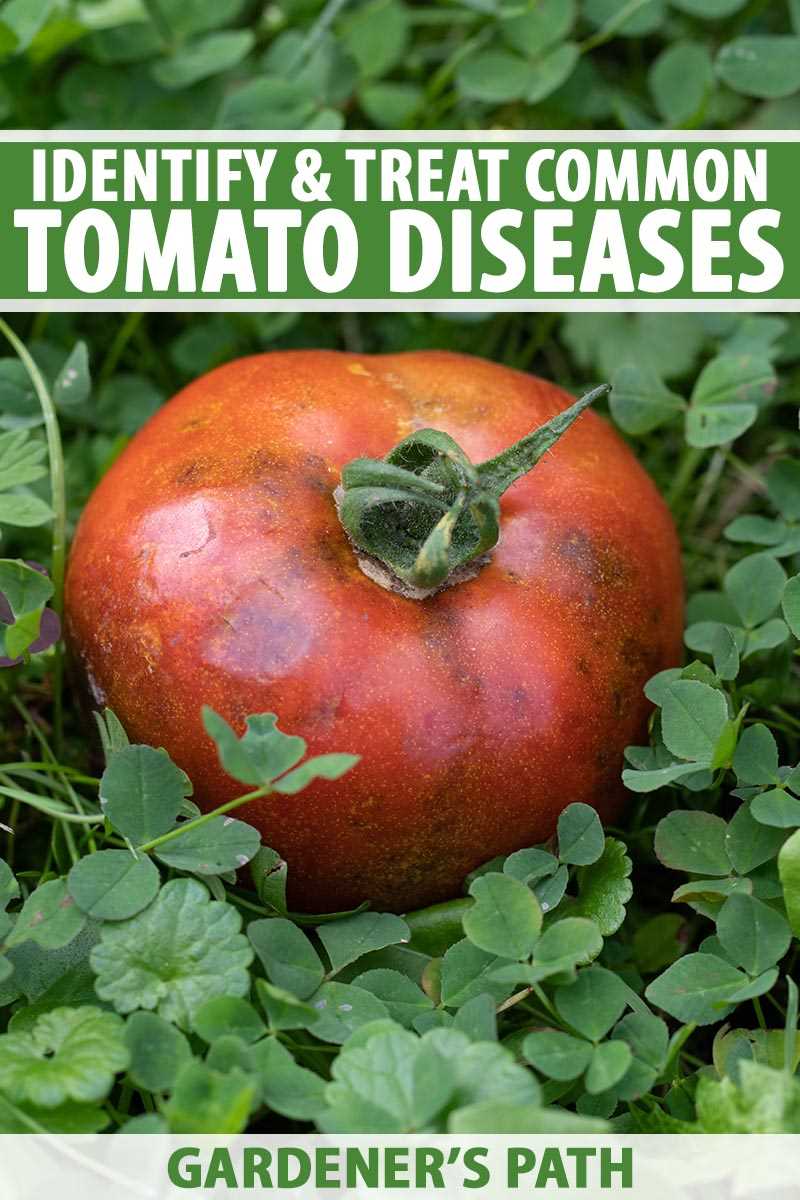
If you’re unsure about which tomato varieties are resistant to brown spot, consult a gardening expert or local extension office for recommendations. They can provide you with information specific to your region and help guide you in selecting the right varieties for your garden.
4. Consider Heirloom Varieties
While many heirloom tomato varieties may not have resistance bred into them, some heirlooms are naturally resistant to diseases, including brown spot. Research specific heirloom varieties that have shown resistance to Cladosporium fulvum, or seek advice from experienced gardeners who have successfully grown heirloom tomatoes without brown spot.
5. Rotate Crop Varieties
To further reduce the risk of brown spot infection, practice crop rotation in your garden. Avoid planting tomatoes in the same spot each year. By rotating your tomato crops, you can minimize the disease’s buildup in the soil and decrease the chances of infection.
Remember, prevention is always better than treatment when it comes to plant diseases. By selecting resistant tomato varieties, you can effectively reduce the risk of brown spot (Cladosporiosis) in your tomato crop and enjoy a healthy harvest.
Practicing Good Crop Rotation to Prevent Brown Spot (Cladosporiosis)
One of the most effective methods to prevent brown spot (cladosporiosis) on tomato plants is practicing good crop rotation. Crop rotation is the practice of growing different crops in a specific order on the same piece of land over a period of time. This helps to break the cycle of diseases and pests that can build up in the soil and affect the health of your tomato plants.
When it comes to preventing brown spot, crop rotation is essential because the disease can survive in the soil for several years. By rotating your tomato plants with other crops, you can disrupt the growth and spread of the pathogen, reducing the risk of infection.
Steps for Practicing Crop Rotation:
- Identify a suitable crop rotation plan: Determine which crops are compatible with tomatoes and can help prevent the spread of brown spot. Some good options include legumes, leafy greens, and root vegetables.
- Divide your garden into sections: Divide your garden into different sections or beds to make it easier to implement crop rotation. This allows you to keep track of which crops were planted in specific areas.
- Rotate crops yearly: Each year, move your tomato plants to a different section or bed of the garden. Make sure to choose a crop that is not susceptible to brown spot. This reduces the chance of the disease spreading to your tomato plants.
- Monitor for signs of disease: Regularly inspect your tomato plants for any signs of brown spot or other diseases. Early detection is crucial for preventing the spread of the disease to other plants.
- Remove and destroy infected plants: If you notice any signs of brown spot on your tomato plants, remove and destroy them immediately. This prevents the disease from spreading further.
Benefits of Crop Rotation:
- Disease prevention: By rotating crops, you reduce the risk of diseases like brown spot spreading from one crop to another.
- Pest control: Crop rotation can help to control pests that are specific to certain crops. Different crops attract different pests, so rotating them can disrupt the pest’s life cycle and reduce their population.
- Improved soil health: Growing a variety of crops improves soil health by adding different nutrients and organic matter. This leads to healthier plants and better yields.
- Sustainable farming: Crop rotation is a sustainable farming practice that reduces the need for chemical pesticides and fertilizers. It promotes a more balanced and natural ecosystem in your garden.
- Long-term benefits: Practicing crop rotation over the years can greatly enhance the overall health and productivity of your garden, including your tomato plants.
By practicing good crop rotation, you can effectively prevent brown spot (cladosporiosis) and ensure the long-term health of your tomato crop. Remember to plan your crop rotation carefully, monitor for signs of disease, and take action if any plants become infected. Happy gardening!
Using Proper Plant Spacing and Pruning Techniques to Prevent Brown Spot (Cladosporiosis)
Brown spot, also known as Cladosporiosis, is a common fungal disease that affects tomato plants. It is caused by the fungus Cladosporium fulvum and can cause brown lesions on the leaves, stems, and fruit of tomato plants. To prevent the spread of brown spot and protect your tomato crop, it is important to use proper plant spacing and pruning techniques.
1. Plant Spacing
- Plant your tomato plants with adequate spacing to allow for good air circulation and reduce the chances of the fungus spreading.
- Space the plants at least 2-3 feet apart to ensure proper air circulation.
- Avoid overcrowding your tomato plants, as this can create a favorable environment for the fungus to thrive.
2. Pruning Techniques
- Regularly prune your tomato plants to remove infected leaves or branches.
- Prune your plants in the morning when the foliage is dry to prevent the spread of the fungus.
- Make clean cuts with sharp pruning shears and disinfect the shears between cuts to avoid spreading the disease.
- Remove any leaves that are touching the ground, as they can become a breeding ground for the fungus.
3. Mulching and Weeding
- Use organic mulch, such as straw or wood chips, around your tomato plants to suppress weed growth and reduce splashing of the fungus onto the leaves.
- Regularly weed your tomato beds to eliminate weed hosts that can harbor the brown spot fungus.
4. Crop Rotation
- Avoid planting tomatoes or other susceptible plants in the same location year after year.
- Practice crop rotation by planting tomatoes in a different area of your garden each year to reduce the buildup of the brown spot fungus in the soil.
By implementing proper plant spacing and pruning techniques, you can help prevent the spread of brown spot (Cladosporiosis) and protect your tomato crop. Regular monitoring and early detection of symptoms are also crucial to address the issue promptly.
Applying Fungicides to Control Brown Spot (Cladosporiosis) in Tomato Plants
One effective method for preventing and controlling brown spot (Cladosporiosis) in tomato plants is the application of fungicides. Fungicides are chemical substances that kill or inhibit the growth of fungi, including the fungus responsible for brown spot.
Choosing the right fungicide:
When selecting a fungicide, it is important to choose one that specifically targets the fungus causing brown spot. Look for fungicides that contain active ingredients such as chlorothalonil, mancozeb, or copper-based compounds. These ingredients have been proven effective in controlling the disease.
Application methods:
There are several methods for applying fungicides to tomato plants:
- Spray application: This is the most common method and involves spraying the fungicide solution onto the foliage of the tomato plants. Be sure to thoroughly cover both sides of the leaves, as well as the stems and any visible lesions. Follow the instructions on the fungicide label regarding the recommended rate of application and frequency of spraying.
- Drench application: This method involves applying the fungicide as a soil drench. Mix the fungicide according to the instructions on the label and pour it around the base of the tomato plants, allowing it to soak into the soil. This method is especially useful for controlling soil-borne fungi.
- Systemic application: Some fungicides are designed to be absorbed by the plant and distributed throughout its tissues. These systemic fungicides provide long-lasting protection against brown spot. They can be applied as sprays or drenches.
Timing of applications:
It is important to begin applying fungicides as soon as the first symptoms of brown spot appear on the tomato plants. This will help prevent the spread of the disease and protect the remaining healthy foliage. Follow the recommended schedule for fungicide application provided on the product label. In some cases, additional applications may be necessary following heavy rainfall or periods of high humidity.
Safety precautions:
When applying fungicides, always follow the safety precautions listed on the product label. Wear appropriate protective clothing, such as gloves and safety glasses. Avoid inhaling the fungicide spray or getting it in contact with your skin or eyes. Keep children and pets away from treated areas until the spray has dried or the soil has absorbed the drench.
Additional control measures:
In addition to fungicide application, there are other measures you can take to control and prevent brown spot in tomato plants. These include:
- Planting resistant tomato varieties.
- Practicing crop rotation.
- Removing and destroying infected plants and debris.
- Providing adequate spacing between plants for better air circulation.
- Watering the plants at the base to avoid wetting the foliage.
- Mulching the soil to prevent splashing of fungal spores.
Conclusion:
Applying fungicides is an effective method for controlling brown spot in tomato plants. By choosing the right fungicides, using proper application methods, and following the recommended timing and safety precautions, you can protect your tomato crop from this destructive disease and ensure a healthy harvest.
Implementing Organic Methods to Control Brown Spot (Cladosporiosis) in Tomato Plants
Brown spot, also known as cladosporiosis, is a common fungal disease that affects tomato plants. It manifests as dark brown spots on the leaves, stems, and fruit of the plant, eventually leading to reduced yield and poor quality tomatoes. While chemical fungicides are available to control this disease, implementing organic methods can provide effective control without the use of synthetic chemicals.
1. Crop Rotation
One of the most important steps in preventing brown spot is crop rotation. Avoid planting tomatoes in the same location year after year, as the fungal spores can overwinter in the soil and reinfect the plants. Rotate tomatoes with non-host crops, such as legumes or brassicas, to break the disease cycle.
2. Proper Spacing and Pruning
Providing adequate spacing between tomato plants allows for better air circulation, reducing humidity and creating an environment that is less favorable for fungal growth. Proper pruning also helps to increase airflow and light penetration, creating an unfavorable environment for the disease.
3. Mulching
Mulching can help prevent the spread of fungal spores by creating a barrier between the soil and the leaves. Use organic mulch, such as straw or wood chips, to suppress weed growth and reduce the splashing of soil onto the plants during watering.
4. Disease-Resistant Varieties
Planting disease-resistant varieties can be an effective long-term strategy to control brown spot. Look for tomato varieties that are resistant to cladosporiosis and other common fungal diseases. Consult with your local extension office or nursery for recommendations.
5. Neem Oil
Neem oil, derived from the neem tree, has natural antifungal properties and can be used as an organic fungicide. Dilute neem oil according to package instructions and spray it on the affected tomato plants. Repeat the application every 7-14 days or as needed.
6. Baking Soda Spray
A homemade baking soda spray can help control brown spot on tomato plants. Mix 1 tablespoon of baking soda, 1 tablespoon of vegetable oil, and 1 gallon of water. Spray the solution on the affected plants, focusing on the leaves. Repeat the application every 7-10 days.
7. Copper Fungicides
Copper fungicides, such as copper sulfate, can provide effective control of brown spot when used according to label instructions. Copper compounds act as a protectant and can prevent the fungus from establishing on the foliage. Use caution when using copper fungicides, as excessive use can result in copper toxicity in the soil.
By implementing these organic methods, you can effectively control brown spot in your tomato plants and enjoy a healthy and bountiful harvest of high-quality tomatoes.
Managing Environmental Conditions to Prevent Brown Spot (Cladosporiosis) in Tomato Plants
Environmental conditions play a crucial role in the development and spread of Brown Spot (Cladosporiosis) in tomato plants. By managing these conditions effectively, you can prevent and control the occurrence of this fungal disease, ensuring a healthy tomato crop.
1. Proper Air Circulation
Adequate air circulation is essential to prevent the buildup of humidity, which creates favorable conditions for Cladosporium fungi to thrive. Ensure that plants are not overcrowded and that there is enough space between them for air to circulate freely.
2. Plant Spacing
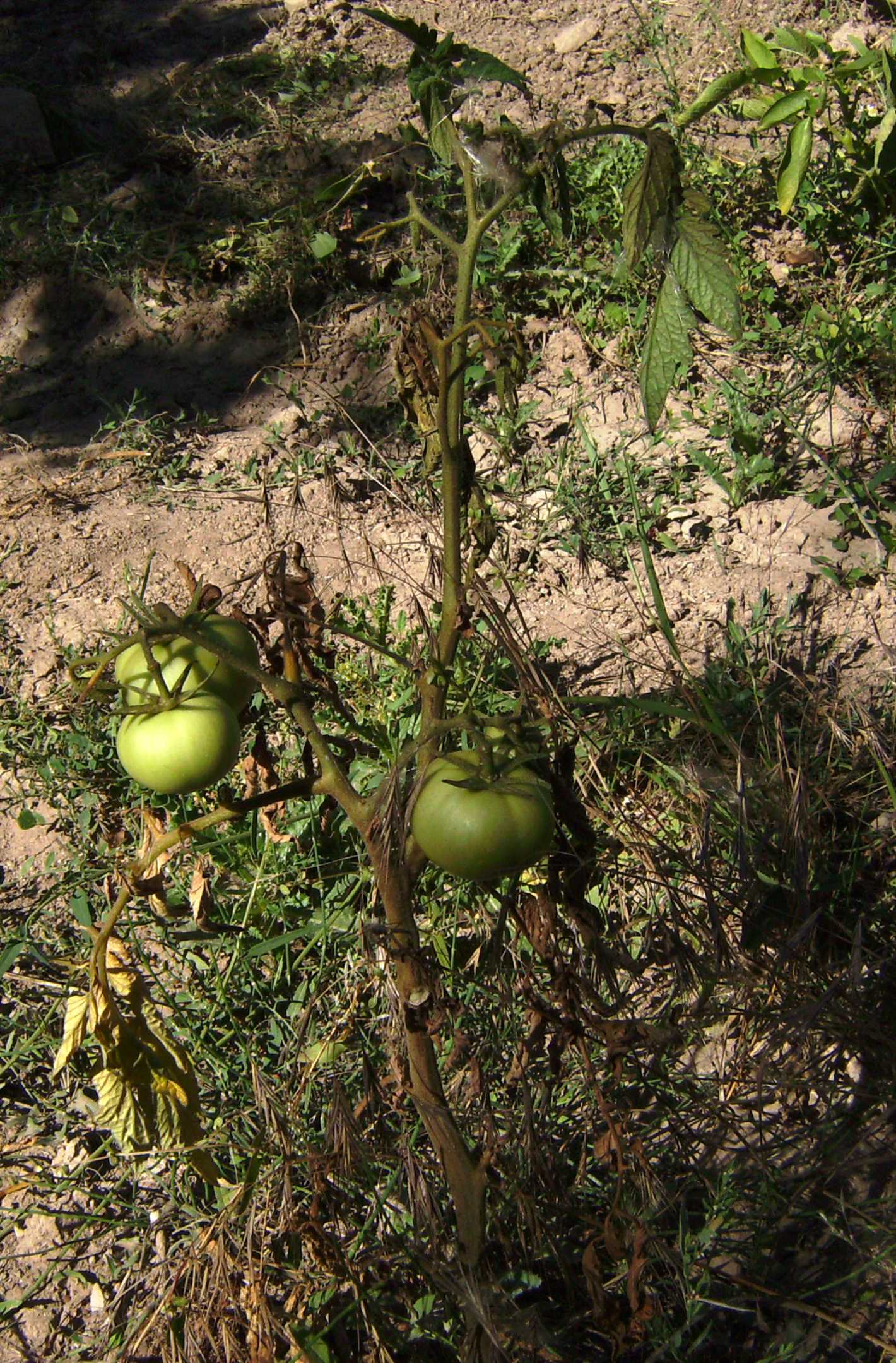
Proper spacing between plants allows for better air movement and reduces the risk of transferring fungal spores from one plant to another. Follow the recommended spacing guidelines for the specific tomato variety you are growing.
3. Mulching
Applying a layer of organic mulch around the base of tomato plants can help maintain soil moisture and regulate temperature. However, be cautious not to over-mulch, as excessive moisture can promote the growth of Cladosporium fungi.
4. Soil Drainage
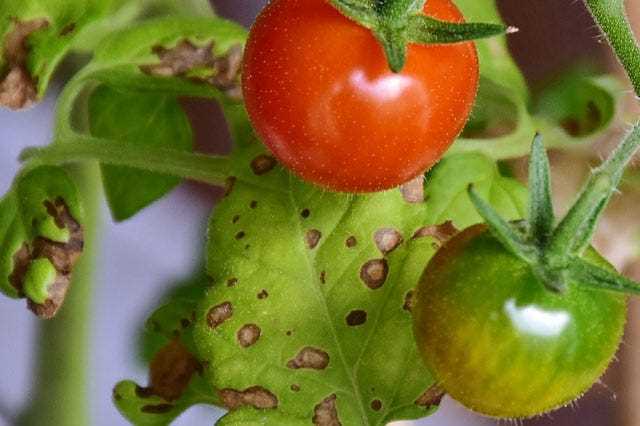
Ensure that the soil in your tomato beds has good drainage properties. Poorly drained soil can lead to waterlogging, creating a favorable environment for Cladosporium fungi to thrive. Avoid overwatering and consider adding organic matter to improve soil drainage.
5. Watering Techniques
Water tomato plants at the base to avoid wetting the leaves. Wet foliage provides an ideal condition for Cladosporium fungi to multiply. Use drip irrigation or a watering can with a narrow spout to target the roots directly.
6. Timely Watering
Water tomato plants in the morning so that the foliage can dry quickly. Moist conditions in the evening can lead to prolonged leaf wetness, increasing the risk of Cladosporiosis.
7. Remove Infected Leaves
Regularly inspect your tomato plants for any signs of brown spots or lesions caused by Cladosporium fungi. Promptly remove and destroy any infected leaves to prevent the disease from spreading further.
8. Proper Fertilization
Maintain a balanced nutrition program for your tomato plants. Over-fertilization can make plants more susceptible to Cladosporiosis. Follow recommended fertilizer application rates and consider using organic fertilizers.
9. Crop Rotation
Practice crop rotation to prevent the buildup of Cladosporium fungi in the soil. Avoid planting tomatoes or other susceptible crops in the same location for consecutive years.
10. Pruning
Regularly prune tomato plants to improve air circulation and reduce humidity levels. Remove any lower branches or leaves that may come into contact with the soil, as these are more prone to fungal infection.
By implementing these measures, you can create an environment that is less favorable for Cladosporiosis to develop and propagate in your tomato plants. With proper management of environmental conditions, you can effectively prevent and control brown spot, ensuring a healthy tomato crop.
“Question-Answer”
What is brown spot (cladosporiosis) and how does it affect tomato crops?
Brown spot, also known as cladosporiosis, is a fungal disease that affects tomato crops. It manifests as brown spots on leaves, stems, and fruits, eventually leading to a decrease in crop yield and quality.
What are the common symptoms of brown spot on tomato plants?
The common symptoms of brown spot on tomato plants include brown spots on leaves, stems, and fruits. The spots may be circular or irregular in shape and can vary in size. The affected areas may also have a fuzzy or velvety appearance.
How can I prevent brown spot in my tomato crop?
To prevent brown spot in your tomato crop, you can take several measures. First, make sure to plant disease-resistant tomato varieties. Additionally, practice crop rotation and avoid planting tomatoes in the same location for consecutive years. Proper spacing between plants is also important to promote airflow and reduce humidity. Lastly, remove and destroy any infected plant debris to prevent the spread of the disease.
What are some effective methods for controlling brown spot in tomato plants?
There are several effective methods for controlling brown spot in tomato plants. One method is to apply fungicides that are specifically formulated to target the cladosporium fungus. Another method is to regularly prune and remove infected plant parts to reduce the spread of the disease. Additionally, maintaining proper plant spacing, providing adequate ventilation, and practicing good watering techniques can help control the disease.
Can organic methods be used to control brown spot in tomato crops?
Yes, organic methods can be used to control brown spot in tomato crops. Some organic options include applying copper-based fungicides, using neem oil, and applying compost or organic matter to improve plant health and resistance to diseases. Good cultural practices, such as crop rotation and proper plant spacing, are also important in organic gardening to prevent the spread of diseases like brown spot.







